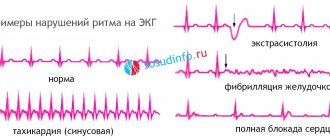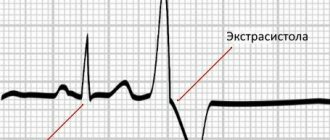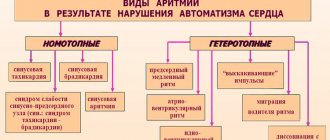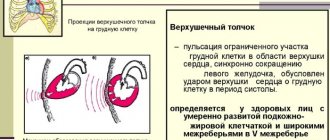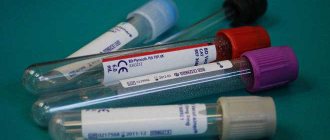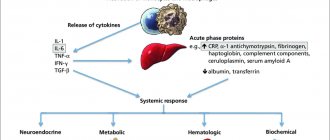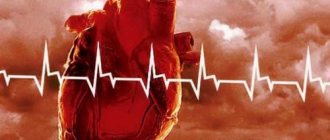Heart rate variability means its variability in response to physical, emotional stress and other external and internal factors. The closer it is to normal or slightly higher than average, the easier it is for the body to adapt to new conditions. High values occur in well-trained athletes who lead a healthy lifestyle, when a person receives sufficient loads and recovers well from them.
Low heart rate variability is typical for diseases: angina pectoris, myocardial infarction, diabetic polyneuropathy, changes in the heart muscle with high blood pressure (hypertrophic cardiomyopathy). A decrease in the indicator to critical values indicates the risk of sudden cardiac arrest.
An increase is a sign of the body’s readiness for stress and indicates the correctness of treatment for diseases. For the study, the rhythmography method is used (ECG for 5 minutes and loads or 24-hour monitoring, Apple Watch). Data assessment is carried out using mathematical analysis methods.
What is heart rate variability (HRV)
Pulse variability, or heart rate variability (HRV), is, in simple words, variety, that is, the acceleration and deceleration of contractions.
For example, a person's heart rate is 60 beats per minute. This means that one second passes between successive contractions. If there is variability, then one interval will be 0.8 seconds and the next 1.2 seconds. This is a simplified approach, but in reality both the pulse rate and the intervals between successive beats will change.
This is completely normal, because at rest the rhythm should become slower, but with physical and emotional stress it speeds up in order to improve the nutrition of internal organs and the brain. Heart rate variability is one of the adaptive reactions. Therefore, the faster the heart changes rhythm, the better a person is adapted to survive in a wide variety of environmental conditions.
For example, in well-trained and endurance athletes, the heart pumps slowly at rest, but during activity, a significant acceleration occurs very quickly. Likewise, after training, they need very little time to restore their original performance.
What does it mean if saved?
If heart rate variability is preserved, this means that the heart adequately responds to changes in the level of oxygen in the blood, an increase in the need for nutrients and energy.
Using an example, we can compare the normal reaction of a healthy, active young person and a heart patient. The first at rest will have an average heart rate of 65 beats per minute; at high load it will accelerate to 110-120. Then the heart muscle, brain, and skeletal muscles will receive a normal amount of oxygen to produce energy. At the end of the activity there is no need for a frequent rhythm; it will slow down and return to the original in 5-7 minutes.
With a slow pulse, the myocardium is well supplied with blood, and the strength of contractions increases. Heart rate variability in this case will be in the range of 65-115 beats.
A high resting heart rate is typical for heart patients. It is necessary in order to compensate for weak contractions of the myocardium and deliver as much oxygen as possible to the internal organs and the brain. Then the initial pulse will be 90-95 beats, and its increase to 110-115 may already be accompanied by heart pain and shortness of breath. Return to original values is slow. Patients feel palpitations for a long time after exercise. Heart rate variability is reduced, since the oscillation interval is only 90-115 beats per minute.
Why you need to know heart rate variability
Heart rate variability should be studied for the following purposes:
- assessment of the state of the autonomic nervous system and the balance between its two departments - sympathetic (conditionally stressful) and parasympathetic (responsible for recovery) in healthy people, with neurocirculatory dystonia, diabetes;
- check the body’s adaptive reserve, that is, the ability to work in extreme conditions (for example, a pilot);
- make a forecast of the risk of death in case of myocardial infarction, arrhythmia, heart failure, severe arterial hypertension;
- identify a risk group of patients who have the possibility of critical arrhythmia and need to have a pacemaker installed;
- select a drug or evaluate the effect of treating heart disease;
- determine the level of stress and stress resistance;
- identify the degree of maturity of the nervous system in children and adolescents.
Heart rate variability in sports is used to assess the initial state of the athlete, and then, during training, to determine the correct selection of loads and intervals between training for recovery.
Do the corresponding parameters depend on the gender of the patient?
Heart rate variability provides insight into a person's physical endurance. Factors such as the time of day, as well as the age and gender of the person are of great importance.
Heart rate variability varies from person to person. At the same time, representatives of the fair sex are usually diagnosed with a higher heart rate. The highest HRV is observed in adolescents and children.
Heart rate variability is also affected by physical activity. During exhausting physical training, heart contractions increase and HRV decreases. Therefore, athletes definitely need to pay attention to heart rate variability in order to reduce physical activity as much as possible.
People who are actively involved in sports can use the following techniques that allow them to quickly recover after physical training:
- light aerobics - such exercises normalize the functioning of the organs of the lymphatic system and normalize blood circulation;
- massage - helps relieve muscle tension, helps relieve fatigue;
- Meditation helps to cope with irritability and increases a person’s performance.
Heart rate variability: normal
Heart rate variability is assessed using several parameters; their normal values for people of different ages (men and women) are given in the table.
| Age | RR during the day, ms | RR at night, ms | SDNN during the day, ms | SDNN at night, ms |
| 20-39 | 754 | 883 | 59 | 67 |
| 40-59 | 832 | 963 | 51 | 56 |
| 60-80 | 832 | 937 | 45 | 49 |
RR is the duration of the interval between beats, and SDNN is the standard deviation of the intervals between heart beats, that is, the total variability of the rhythm. Measurements are taken in milliseconds (ms).
Other indicators are also used, their generally accepted designations:
- LF: low frequencies in the range of 0.04-0.15 Hz;
- HF: high frequencies in the range of 0.15-0.4 Hz;
- RMSSD: sequential interval difference deviation, shows HRV at elevated heart rate.
These are not the only measurements; there are also several methods for processing indicators: time domain (statistical and geometric), frequency domain, nonlinear and mathematical modeling.
Measurement techniques
Today, there are various methods for detecting HRV. Particular attention should be paid to the following diagnostic methods:
- Time domain methods.
- Integral indicators.
- Frequency domain methods.
When applying time domain methods, specialists are guided by the results of statistical studies. Integral HRV indicators are detected during correlation rhythmography and autocorrelation analysis. Frequency domain methods are designed to study periodic components of variability.
When using statistical methods for studying heart rhythm, NN intervals are calculated and the corresponding measurements are further analyzed. After this, the patient is given a cardiointervalogram. In essence, it is a set of RR intervals arranged in a certain sequence.
To evaluate the results of a cardiointervalogram, the following criteria are used:
- SDNN—total HRV indicator;
- RMSSD - this criterion is an analysis of data obtained by comparing NN intervals;
- pNN50 - this indicator helps to identify the ratio of NN intervals that differ from each other by more than 50 ms and the total number of NN intervals.
When conducting HRV studies, geometric techniques are also used. When using them, cardiointervals are presented as random variables. Information about their duration is recorded on the histogram.
Apple Watch metrics and meaning
For healthy people, it is enough to measure only two main indicators - RR and SDNN. By changing their values, you can monitor the state of the heart and nervous system using the Apple Watch (smart watch). Measurements are taken 2 times a day, so for accuracy you need to wear the bracelet without taking it off. You can get a result sufficient for processing in no less than 10 days.
The readings are usually lower in the evening, and higher in the morning before waking up. HRV is influenced by many external and internal factors. Therefore, it is also important to determine your optimal indicator. To do this, it is recommended to record the SDNN value every morning, and then evaluate your well-being at the end of the day. In this way you can find the value at which there is a good state. Then you should start from your own norm.
Determination methods
Cardiological study of heart contractions has determined the optimal methods of HRV and their characteristics in various conditions.
The analysis is carried out by studying the sequence of intervals:
- RR (electrocardiogram contractions);
- NN (spaces between normal contractions).
Statistical methods. These methods are based on obtaining and comparing “NN” intervals with an estimate of variability. The cardiointervalogram obtained after the examination shows a set of “RR” intervals repeating one after another.
Indicators of these intervals include:
- SDNN reflect the sum of HRV indicators at which deviations of NN intervals and variability of RR intervals are highlighted;
- RMSSD comparison of a sequence of NN intervals;
- PNN5O shows the percentage of NN intervals that differ by more than 50 milliseconds over the entire study period;
- CV assessment of magnitude variability indicators.
Geometric methods are distinguished by obtaining a histogram that depicts cardiointervals with different durations.
These methods calculate heart rate variability using certain quantities:
- Mo (Mode) denotes cardiointervals;
- Amo (Mode Amplitude) – the number of cardio intervals that are proportional to Mo as a percentage of the selected volume;
- VAR (variation range) degree ratio between cardiac intervals.
Autocorrelation analysis evaluates heart rhythm as a random evolution. This is a dynamic correlation graph obtained by gradually shifting the time series by one unit relative to the own series.
This qualitative analysis allows us to study the influence of the central link on the work of the heart and determine the hidden periodicity of the heart rhythm.
Correlation rhythmography (scatterography). The essence of the method is to display successive cardio intervals in a graphical two-dimensional plane.
When constructing a scatterogram, a bisector is identified, in the center of which there is a set of points. If the points are deviated to the left, you can see how much shorter the cycle is; the shift to the right shows how much longer the previous one is.
On the resulting rhythmogram, the area corresponding to the deviation of NN intervals is highlighted. The method allows us to identify the active work of the autonomic system and its subsequent effect on the heart.
Reasons for upward or downward changes
The following causes a decrease in heart rate variability in healthy people:
- fatigue;
- stress overexertion;
- lack of sleep and rest;
- smoking;
- alcohol abuse;
- excessive intensity and frequent training;
- colds;
- dehydration.
In diseases, a decrease in HRV indicates their progression. Normally, variability increases after rest, normalization of the daily routine, recovery, massage sessions, and relaxation. In athletes, HRV increases with adequate training. For patients, an increase can be achieved by strictly following the doctor’s recommendations for treatment, correcting habits and lifestyle.
What is the danger
The danger is a decrease in HRV in patients with heart diseases - angina, heart attack, myocardial changes with high blood pressure. This sign is regarded as:
- deterioration of the heart muscle;
- disease progression;
- limit of compensatory capabilities (for example, the heart cannot withstand a high load during hypertension);
- risk of death.
In an athlete, a decrease in heart rate variability reflects overtraining and deterioration in physical fitness.
HRV of a healthy body
The variability of the average rhythm in healthy people makes it possible to determine their physical endurance according to age, gender, and time of day.
HRV indicators are individual for each person. Women have a more active heart rate. The highest HRV is observed in childhood and adolescence. High- and low-frequency components decrease with age.
HRV is influenced by a person's weight. Reduced body weight provokes the power of the HRV spectrum; in overweight people the opposite effect is observed.
Sports and light physical activity have a beneficial effect on HRV: the spectrum power increases, heart rate becomes lower. Excessive loads, on the contrary, increase the frequency of contractions and reduce HRV. This explains the frequent sudden deaths among athletes.
Using methods for determining heart rate variations allows you to control your workouts by gradually increasing the load.
Reduced heart rate variability: what does it mean, signs and symptoms
If rhythm variability is sharply reduced, this means that the heart muscle has exhausted its ability to compensate for high load or insufficient blood supply. The patient also has disturbances in the regulation of the rhythm of contractions on the part of the nervous and endocrine systems. The most studied signs of a drop in HRV are symptoms of angina pectoris, myocardial infarction, heart failure, and diabetic polyneuropathy.
Unstable angina
As HRV levels decrease in patients, the frequency and severity of attacks of chest pain increases. The ST segment drops on the ECG, reflecting deterioration of the coronary blood supply. With SDNN <40, the risk of sudden death within a month increases 8 times.
Myocardial infarction
A decrease in HRV reflects the depth and extent of the infarction and the severity of acute heart failure. The greater the increase in the tone of the sympathetic nervous system (increased heart rate), the higher the risk of a life-threatening form of arrhythmia - ventricular fibrillation with sudden cardiac arrest.
Heart failure
The higher the heart rate and the lower its variability, the more severe the circulatory failure. Patients experience shortness of breath and palpitations with lower levels of physical activity or even at rest. A drop in indicators reflects a decrease in the strength of myocardial contractions.
Diabetic polyneuropathy
With this complication of diabetes mellitus, a decrease in HRV makes it possible to detect deterioration in the innervation of the heart and other internal organs at a stage when there are no obvious symptoms. Typically, a slight change in indicators during an orthostatic test (transition to a standing position from a lying position). This means that the nervous system cannot provide an adequate change in heart rate during exercise.
If HRV is reduced
A sharp decrease in heart rate variation indicates certain diseases: · Coronary and hypertension; Myocardial infarction; Multiple sclerosis; Diabetes mellitus; Parkinson's disease; Taking certain medications; Nervous disorders.
HRV studies in medical activities are among the simple and accessible methods that assess autonomic regulation in adults and children in a number of diseases.
In medical practice, the analysis allows you to: · Assess the visceral regulation of the heart; · Determine the general functioning of the body; · Assess the level of stress and physical activity; · Monitor the effectiveness of drug therapy; · Diagnose the disease at the initial stage; · Helps to choose an approach to the treatment of cardiovascular disease; vascular diseases.
Therefore, when examining the body, you should not neglect the methods of studying heart contractions. HRV indicators help determine the severity of the disease and select the correct treatment.
Indications for heart rate studies
Heart rate variability studies are needed when:
- attacks of chest pain;
- frequent fluctuations in pulse and blood pressure;
- signs of electrical instability of the myocardium - ventricular extrasystoles, complex arrhythmias with increased heart rate;
- the need to distinguish a functional rhythm disturbance (for example, in neurosis) from an organic one in heart disease;
- determining the stage of hypertension (from the second HRV decreases);
- assessing the risk of complications and poor prognosis in patients with cardiac pathology.
For healthy people, research is necessary when selecting a training regimen and professional selection for work with high stress on the body.
Does Atropine affect HRV?
HRV is often reduced in people who take Atropine. The drug also causes other side effects:
- feeling of dry mouth;
- tachycardia;
- problems with urination;
- constipation;
- dizziness;
- the appearance of edema in the conjunctival area.
Atropine is used in the treatment of the following pathologies: gastric ulcer, bile duct spasm, duodenal ulcer, bradycardia, renal colic, bronchospasm.
Atropine, which reduces HRV, should be used with caution if the patient has atrial fibrillation, coronary heart disease, heart failure and mitral stenosis, increased intraocular pressure, or chronic prostate pathologies.
What drugs, besides Atropine, affect heart rate fluctuations? A decrease in HRV may be a consequence of the use of drugs belonging to different pharmacological groups. They are listed in the table below.
| Drugs | Features of medications |
| Beta blockers | Beta blockers are high blood pressure medications that act on the sympathetic nervous system. Medicines reduce the likelihood of death in patients who have been diagnosed with coronary artery disease. At the same time, medications belonging to this pharmacological group often cause side effects: pain in the head, poor sleep, irritability, decreased libido, drowsiness, cold sensations in the extremities, nausea. |
| Cardiac glycosides | Medicines improve the quality of life of patients who have been diagnosed with heart failure. Medicines are used for myocardial dystrophy, tachycardia, post-infarction cardiosclerosis. |
| Psychotropic medications | The drugs have a hypnotic and sedative effect. Medications help with depression and sleep disorders, but they often cause side effects. In addition to a decrease in HRV, other undesirable effects (nausea, menstrual irregularities, drowsiness, headaches) are observed when using psychotropic drugs. |
| ACE inhibitors | Medicines reduce the likelihood of cardiovascular diseases in patients with hypertension. In terms of their effectiveness, the drugs are in no way inferior to beta-blockers, drugs with diuretic properties, and calcium antagonists. ACE inhibitors are used if the patient has left ventricular hypertrophy concomitant with hypertension and heart failure. |
Rules for rhythmography
Rhythmography requires strict adherence to the rules for ECG registration:
- time of day – from 9 am to 12 noon;
- temperature in the office – 20-22 degrees;
- complete silence;
- pre-ventilation for 30 minutes;
- semi-darkened room;
- absence of a health worker in the office during the recording period;
- lying or sitting position with support on the back of a chair;
- before starting recording, you need to give time to adapt (7-10 minutes);
- There should be no discomfort.
For women, days are chosen taking into account the menstrual cycle - usually 2-3 days after the end of bleeding and no later than 5 days before the next period.
Preparation for the procedure
The day before rhythmography, alcohol consumption, feasting, and night shifts are not recommended. You cannot take pills, drink coffee, play sports, or be nervous 12 hours before. Come for examination 2 hours after eating. In the office, you must turn off the phone and exclude all extraneous conversations.
Features of the study
After a short recording of the initial ECG (several cycles of 5 minutes), the doctor performs stress tests:
- respiratory - delay, acceleration, deceleration, long and short exhalation;
- change of body position - the patient is asked to stand up;
- squeezing the expander;
- vagal tests - massage near the carotid artery, eyeballs, cooling of the face, feet, hands;
- arithmetic exercises;
- taking medications that slow or speed up your heart rate.
Usually choose 2-4 types from those listed. When recording an ECG on a daily basis, the patient leads his usual lifestyle, but is required to record the time of sleep, meals, physical activity and its type, stress loads, and pain.
Decoding the results
After processing the results obtained, data is obtained on the functional state of the body; the decoding does not indicate the indicator of activity of regulatory systems (abbreviated PARS). It is considered a special program based on points. Taken into account:
- heart rate and variability;
- the ratio of sympathetic influences (stress, activity) and parasympathetic (rest, recovery);
- heart response to stress.
The points received are deciphered as follows:
- from 1 to 2 – the norm, the body reacts adequately to loads, the state of working (optimal) tension;
- from 3 to 4 – moderate tension of adaptive mechanisms, occurs during stress, transition to new working conditions, moving;
- 5 points – pronounced tension in the nervous and endocrine systems, but a healthy body can cope on its own, and in case of illness it is enough to reduce the effect of external factors;
- 6-7 points – overexertion, medicinal support of the body is required, complete exclusion of stress loads;
- 8-10 points – a critical failure of adaptation; a course of treatment will be required.
Rate variability is sharply reduced: how to treat
If there is a sharp decrease in heart rate variability, you must:
- reduction of load (reduction of physical activity, elimination of anxiety, conflicts);
- refusal of stressful changes (for example, change in climate, work, diet, business trip, participation in competitions);
- sleep at least 8 hours at night, if necessary, rest during the day;
- transition to a healthy diet - vegetables, fruits growing in the area of residence, lean meat, fish, dairy products, a minimum of processed and canned food, no spicy, fatty foods, alcohol, strong tea, coffee;
- provide an opportunity for relaxation for the nervous system - breathing exercises, walks in nature, light massage sessions, aromatherapy, listening to calm music.
If there are heart diseases, the doctor reviews treatment regimens; they can be supplemented with drugs that improve metabolism in the myocardium (for example, Preductal, Mildronate).
Additional criteria to consider
To assess the degree of adaptation of the heart to various factors, additional parameters are calculated:
- autonomic balance index, which reflects the influence of the parasympathetic and sympathetic systems on the condition of the heart;
- an indicator of the adequacy of regulatory processes necessary to determine the effect of the sympathetic department on the state of the sinus node;
- voltage index, showing the degree of influence of the nervous system on the functioning of the heart.
Increased variability: what to do
With increased heart rate variability, the body is ready for stress, so this period is considered optimal for any active exercise. Athletes with high performance demonstrate success in competitions; you can plan a change in climatic conditions (for example, a trip to hot countries on vacation or an expedition to the north). Any complex projects at such a time are considered especially successful.
Pulse variability means its variability when changing external and internal environmental conditions. If it is normal, then the body is well adapted to stress, and if it is reduced, rest and recuperation are needed. Low levels in heart patients are dangerous due to critical cardiac dysfunction.

